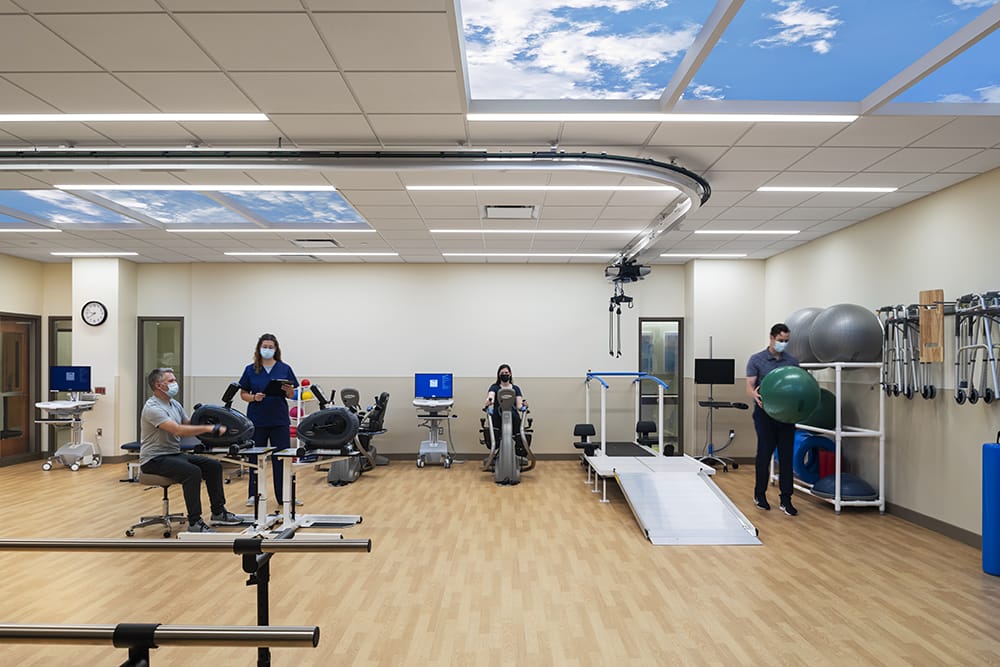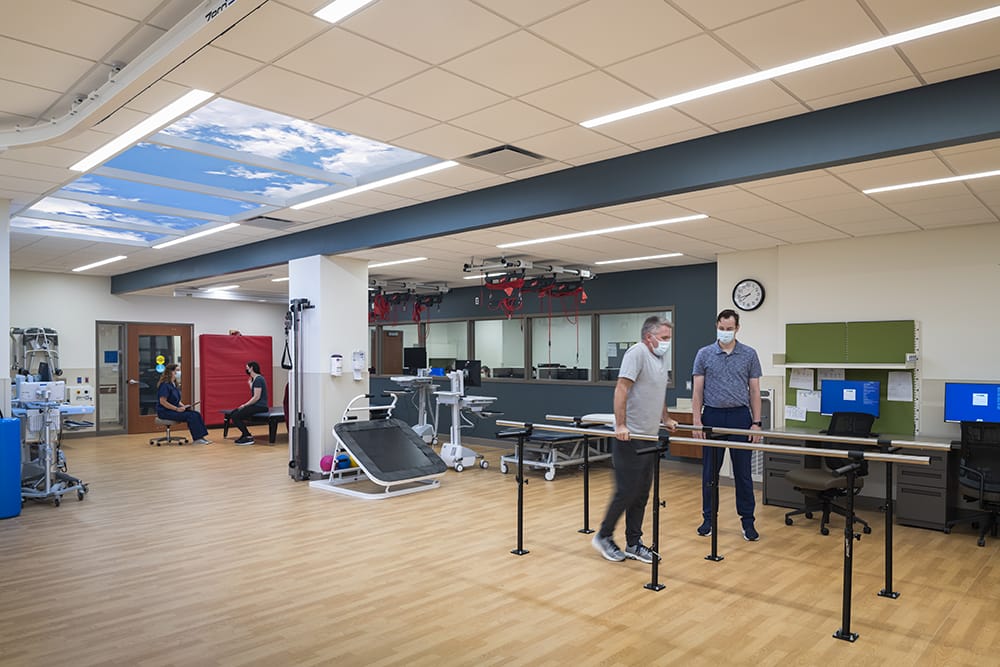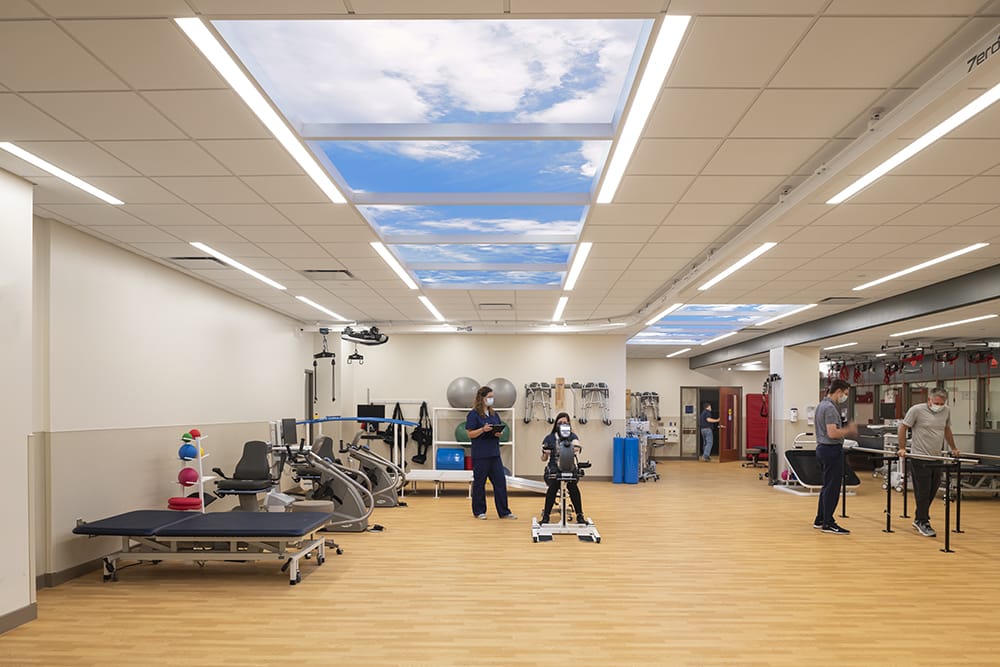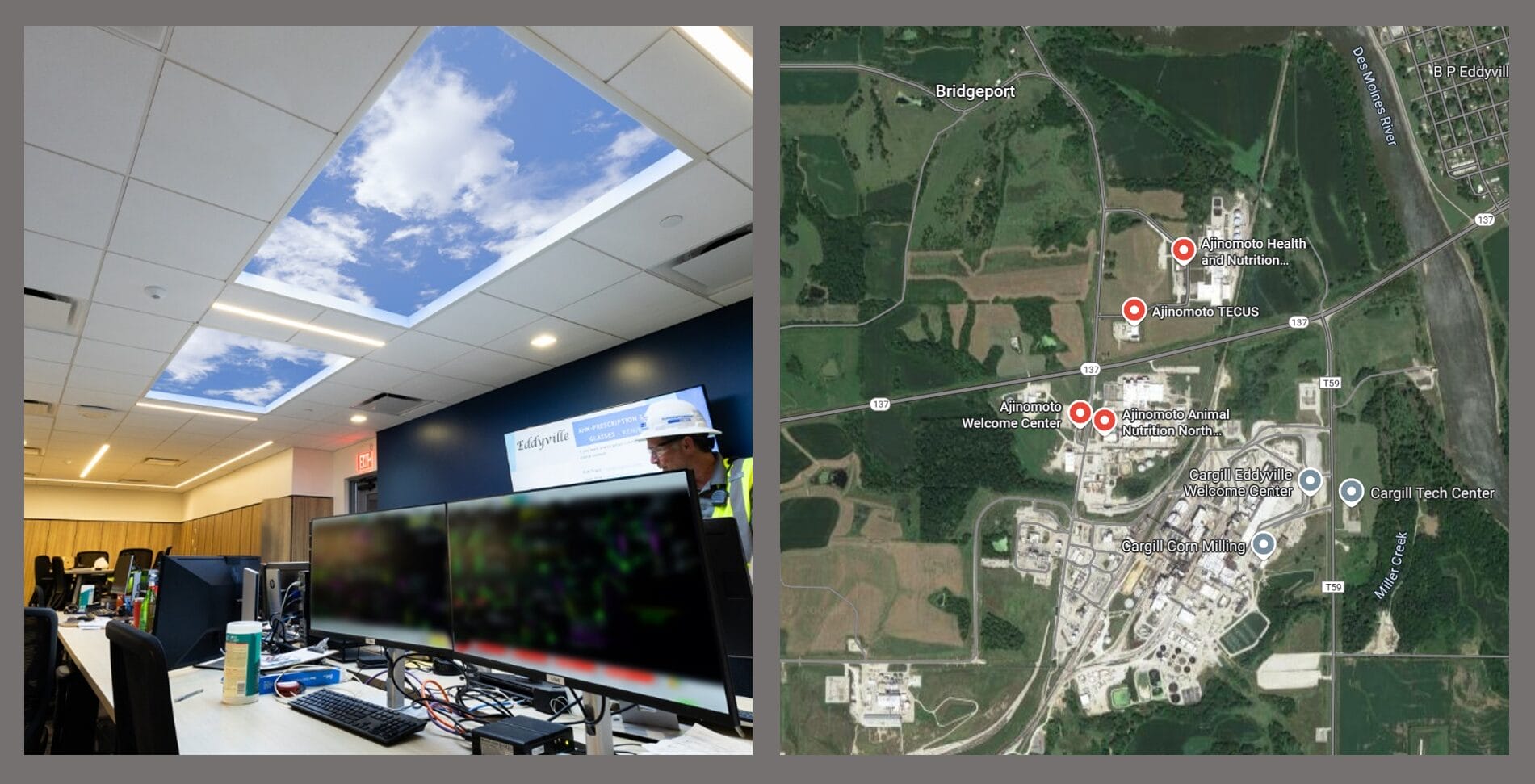After major trauma, a patient’s length of stay for post-acute and rehabilitation care can last weeks or even months. Depending on the type of condition, taking for example orthopedic surgery for hip replacement, a severe burn case, or complex arthritic disorders, all these conditions would keep patients indoors where access to wide open, natural spaces is not possible for some time.
Therefore, having a visual connection to nature at the earliest point in the rehabilitation process can do wonders for recovering patients. The sensory stimuli of perceived proximity to nature can induce pleasant memories of past activities in nature or trigger the imagination in such a way that our physiology releases endorphins, the body’ natural pain killers and mood drivers.

Whether we imagine ourselves engaging in a biophilic activity like trekking through the forest or canoeing down a glittering creek, our mind-body connection is stimulated in such a way that the hypothalamus and pituitary gland releases endorphins, generating feelings of wellbeing and happiness.
Hence, the attributes of the environment of care, particularly in physical therapy settings, play a genuine role in motivating, encouraging, and stimulating patients. When recovering patients remember or imagine sensory-rich natural environments, it boosts their emotional reserves and disposition to persist. And sticking with physical therapy exercises is key to long term recovery.
Post-acute care often involves inpatient rehabilitation at the hospital where staff deal with recovery care from a stroke, spinal cord or a traumatic brain injury to complications from cardiac, pulmonary, or neuromuscular disease, among other ailments. Receiving the physical therapy along with other inpatient rehab regiments require the proper equipment and a supportive environment of care.

At Froedtert Bluemound Rehabilitation Hospital, a 50-bed inpatient facility for people recovering from and adjusting to a life-altering illness or injury, all patient rooms are private, fully accessible with a bathroom, and designed to accommodate patients with a variety of needs.
The hospital’s large therapy gymnasium features state-of-the-art rehabilitation equipment and technology, including:
* Functional Electronic Stimulation (FES)—a treatment that applies small electric charges to a muscle that has become paralyzed or weakened due to damage to the brain or spinal cord
* Upper Extremity Robotics—a robotic device to facilitate rehabilitation by assisting in the repetitive, labor-intensive manual therapy usually handled by physical or occupational therapists
* ZeroG®—a robotic body-weight support system secured on an overhead track that allows patients with severe gait impairments to practice balance and gait exercises in a safe and controlled environment.

In conjunction with the equipment and the skilled care needed for a successful physical therapy regiment, the surroundings also play a therapeutic role. In enclosed areas where sophisticated equipment requires calibration, bracing or custom installation, visual access to a natural exterior is not always possible. However, providing such prospect is a powerful incentive for patients because of the intuitive association between green spaces, blue skies, and carefree mobility.
While the building layout and hospital location prevented the therapy gymnasium from access to a landscape vista that could motivate patients in their daily physical therapy routine, the design team opted for a set of virtual skylights that could open up the gym’s isolated interior. A pair of Luminous SkyCeilings, each one running 20’ in length by 6’ wide, were incorporated into the drop ceiling.
The unexpected overhead openings above a substantive section of the gymnasium generated a tangible perceived connection to a beautiful blue sky. The virtual skylights help staff motivate patients as they begin their recovery programs, gaining strength to return home and continue their wellness journey.



